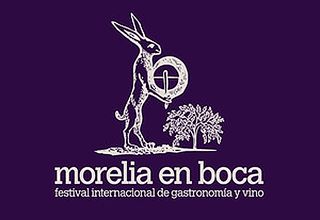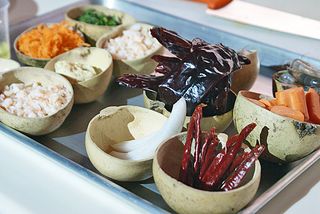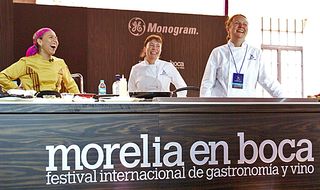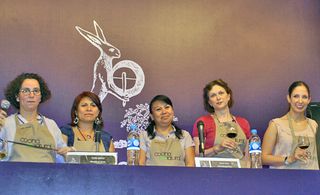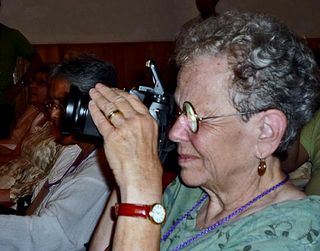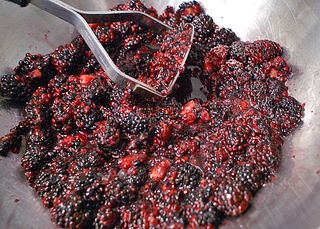
Blackberries are one of the staples of the Mexico Cooks! kitchen. In season nearly year-round, Mexico's blackberries are commercially grown primarily in the states of Michoacán and Jalisco. I'm crushing this bowlful of delicious blackberries with Splenda® and a pinch of salt to add to breakfast yoghurt. Wild blackberries (in the Purépecha language, tzitún) still grow in the oak and pine forests of Michoacán.
In 1994, the commercially cultivated blackberry first arrived in the area around Los Reyes, Michoacán. High in the mountains, Los Reyes offered a perfect climate for the Brazos variety of erect blackberries. Originally, the commercial growers planted only three hectáreas (about 6 acres) of berries. Developed at Texas A&M University and introduced in 1959, 'Brazos' has been the Texas standard for years and is still a great variety. The berries are large and the plants produce heavily. In Michoacán, this variety starts ripening early in May. The berries are a just a little bit acid and are better for cooking and canning than fresh eating. This variety has more thorny plants and larger seeded fruit than many of the improved varieties. In fact, the blackberries offered in Mexico's markets are huge, about an inch long by half an inch in diameter–as big as the ball of my thumb.
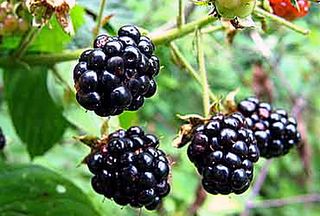
Brazos blackberries 'on the hoof'.
Since those 1994 beginnings, local growers have learned a tremendous amount about the cultivation of blackberries. Today, the fruit fields cover more than 12,500 hectáreas in the area of Los Reyes, Tocumbo, and Peribán, and cultivation is currently underway in the area around Pátzcuaro–almost all in the west-central highlands of Michoacán. The 2018 blackberry production reached a weight of more than 260,000 tons of blackberries–tons! Ninety-five percent of those were exported to the United States, the primary foreign market. The rest of those exported went to Europe and Japan. This quantity of blackberries represents 95% of those grown in Michoacán and 90% of those grown anywhere in Mexico. Next time you buy a plastic "clamshell" box of blackberries, look at the label. Most labels will read, "Product of Mexico." Mexico Cooks!' rinconcito (tiny corner) of Mexico produces more blackberries than anywhere else in the world. Fortunately, enough of Michoacán's blackberries stay in Mexico to satisfy its population.
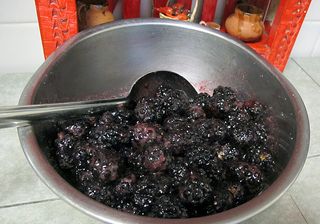
Recently Mexico Cooks! was unable to find unsweetened, unflavored yoghurt in our neighborhood shops–and there was nearly a kilo (2.2 pounds) of blackberries in the refrigerator that needed to be eaten immediately. They had been destined for a week's worth of breakfasts, but one morning se me prendió el foco (the light bulb went on in my brain) and I thought: COBBLER! In the bowl is the entire amount of berries, mixed with sugar, the juice and some grated zest of a limón (key lime), and a bit of cornstarch.
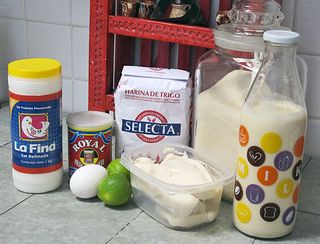
Blackberry cobbler, as you might have guessed, is not in the standard Mexican food repertoire. However, when all of the ingredients are grown or made in Mexico, maybe it should be. In the photo are salt, baking powder, an egg, two limones, wheat flour, standard-grade sugar,milk, and freshly rendered pork lard. Lard, so shoot me! You can substitute vegetable shortening, but lard tastes better.
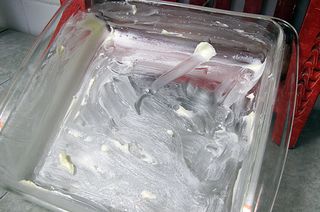
Pre-heat the oven to 425ºF and butter a baking dish. In this instance, I used an 8" square ovenproof glass baking dish.

Scoop the blackberry mixture into the pan and gently even it out.
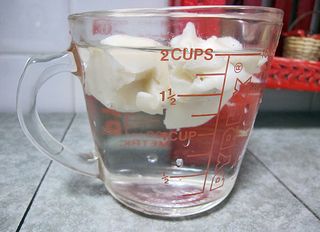
Measure the shortening of your choice. I always use the displacement method to measure solid shortening: for this 1/4 cup of lard, I started with 1 3/4 cups of cold water in this clear measuring cup. I added lard until the water rose to the two-cup level, then emptied out the water. Bingo, 1/4 cup of lard and no mess.
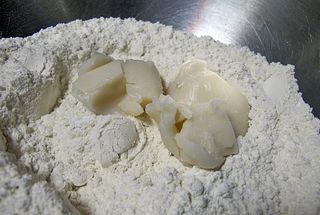
The flour mixture that will become the dough for topping the cobbler. You see the lard on top of the flour mixture, ready to be worked into it.
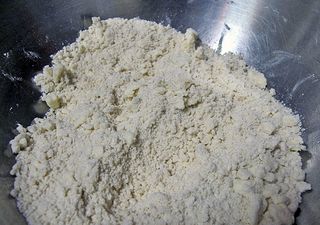
The flour mixture should look like this when you finish working the lard into it.
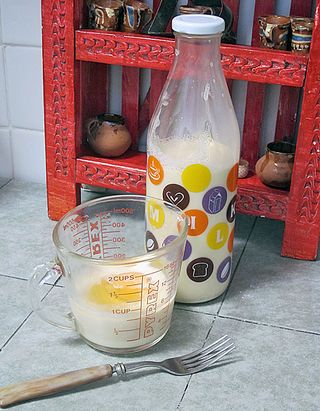
Break an egg into the milk and beat with a fork till blended.
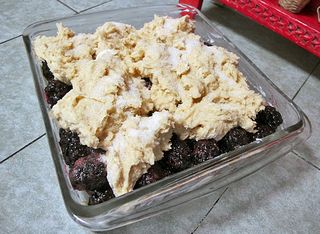
The cobbler, topped with raw dough and ready for the oven. Sprinkle the raw dough with sugar to give it a finished look after baking. The cornstarch that I mixed with the raw blackberries and sugar thickens the juices as the cobbler bakes.
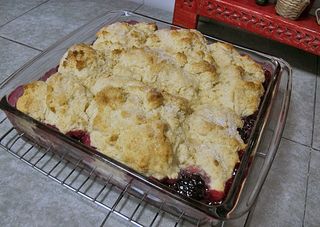
Bake the cobbler for about half an hour, or until the dough is light golden brown. Your house will smell heavenly!
Here's the entire recipe:
Blackberry Cobbler
Ingredients
4-6 cups fresh blackberries
3/4 cup sugar, divided use
1 Tbsp lemon juice
zest of 1/2 lemon
1 Tbsp cornstarch
2 cups all-purpose flour
1/4 tsp salt
1 Tbsp baking powder
1/4 cup shortening–in this instance, lard
4 Tbsp butter
1 whole egg
1/2 cup milk
Preparation
Preheat your oven to 425ºF.
Butter the glass baking dish. Mix blackberries, 1/2 cup sugar, cornstarch, lemon juice, and lemon zest in a large mixing bowl. Reserve.
In a separate bowl, mix the flour, salt, baking powder, and 1 or 2 Tbsp sugar. Add the shortening and butter and work them into the flour with your fingers, until the mixture looks like fairly coarse corn meal.
Measure 1/2 cup milk into a large measuring cup; break the egg into the milk. Beat with a fork until well blended. Pour the milk/egg mixture into the flour/shortening mixture and stir until smooth. The dough should not be sticky; if you need to add more flour, start with just an additional tablespoon. When the dough is smooth but still quite damp, it's ready.
Pour the blackberry mixture into the glass baking dish and gently even out the berries with your fingers. Put large spoonfuls of dough all over the berries, leaving some small spaces on top for the juice to bubble through. Flatten the dough a little–use your fingers, and don't worry about how it looks. Sprinkle the top of the dough with a tablespoon or two of sugar.
Bake until golden brown, about 30 minutes. A serving of blackberry cobbler, topped with a scoop of vanilla ice cream, will look like this–truly a thing of beauty.
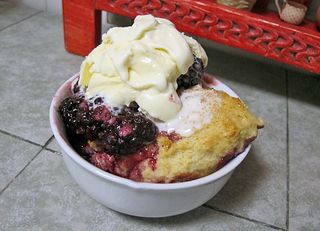
The finished product: blackberry cobbler, hot out of the oven and topped with rich real-cream vanilla ice cream. The top diameter of the small white bowl in the photo above measures three inches.
What could be better for breakfast, or for dessert–a taste of Mexican blackberries, from a recipe straight out of your grandmother's kitchen!
Looking for a tailored-to-your-interests specialized tour in Mexico? Click here: Tours.
